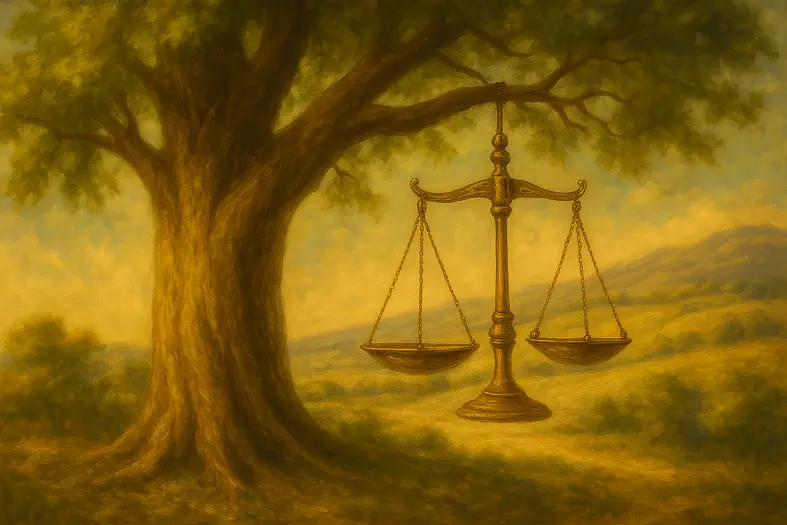


Israel is commanded to uproot and destroy idolatry in the Land — breaking altars, smashing pillars, burning Asherim, and erasing idol names.
This mitzvah commands Israel to obliterate all traces of idolatry and its accessories from Eretz Yisrael. Rambam (Hilchot Avodat Kochavim 7:1–2) writes that this includes demolishing altars, cutting down Asherah trees, and erasing the names of idols from speech. The mitzvah’s purpose is to sanctify the Land, ensuring it remains devoted solely to Hashem.
The Talmud (Avodah Zarah 45b) explains that destruction must be complete and irreversible — burning, smashing, or grinding so the item loses its form. Rashi (Deut. 12:2) emphasizes that the Torah links idolatry to high places and leafy trees because idolaters sought dramatic natural settings. Ramban stresses that this mitzvah is a tikkun (rectification) — erasing pagan corruption so holiness may rest on the Land. Sefer HaChinuch (Mitzvah 427) explains that leaving remnants of idolatry risks tempting Israel to imitation. Midrash (Sifrei Devarim §61) declares: “Where there are idols, there is no Shechinah.”
Commentary & Classical Explanation:
Contrast with Mitzvah 52 (Not to plant a tree in the Temple courtyard):
Parallel to Mitzvah 54 (Not to derive benefit from idols):
Removing Physical Idolatry Today
Destroying Idolatrous Influence
Digital & Ideological “Idols”
Community Safeguards
Personal Spiritual Practice


Mitzvot that prohibit worship of false gods and practices associated with idol worship.
Concerns the Beit HaMikdash, korbanot (offerings), and priestly service.
Represents the concept of spiritual intentionality, purity, and sanctity—set apart for a higher purpose.
Represents Emunah—the deep, inner trust in Hashem’s presence, oneness, and constant involvement in our lives. This badge symbolizes a heartfelt connection to G-d, rooted in belief even when we cannot see. It is the emotional and spiritual core of many mitzvot.
Signifies awe and reverence toward Hashem—living with awareness of His greatness and presence.
Mitzvot that strengthen communal life — showing up, participating, supporting, and belonging. Community is where holiness is shared, prayers are multiplied, and responsibility becomes collective.
Used for mitzvot that reflect Judaism’s foundational principles—belief in G-d, reward and punishment, prophecy, Torah from Heaven, and more. These commandments shape the lens through which all others are understood.
Mitzvot that define and deepen the relationship between a person and their Creator. These include commandments involving belief, prayer, Shabbat, festivals, sacrifices, and personal holiness — expressions of devotion rooted in divine connection.

Dive into mitzvot, prayer, and Torah study—each section curated to help you learn, reflect, and live with intention. New insights are added regularly, creating an evolving space for spiritual growth.

Explore the 613 mitzvot and uncover the meaning behind each one. Discover practical ways to integrate them into your daily life with insights, sources, and guided reflection.

Learn the structure, depth, and spiritual intent behind Jewish prayer. Dive into morning blessings, Shema, Amidah, and more—with tools to enrich your daily connection.

Each week’s parsha offers timeless wisdom and modern relevance. Explore summaries, key themes, and mitzvah connections to deepen your understanding of the Torah cycle.